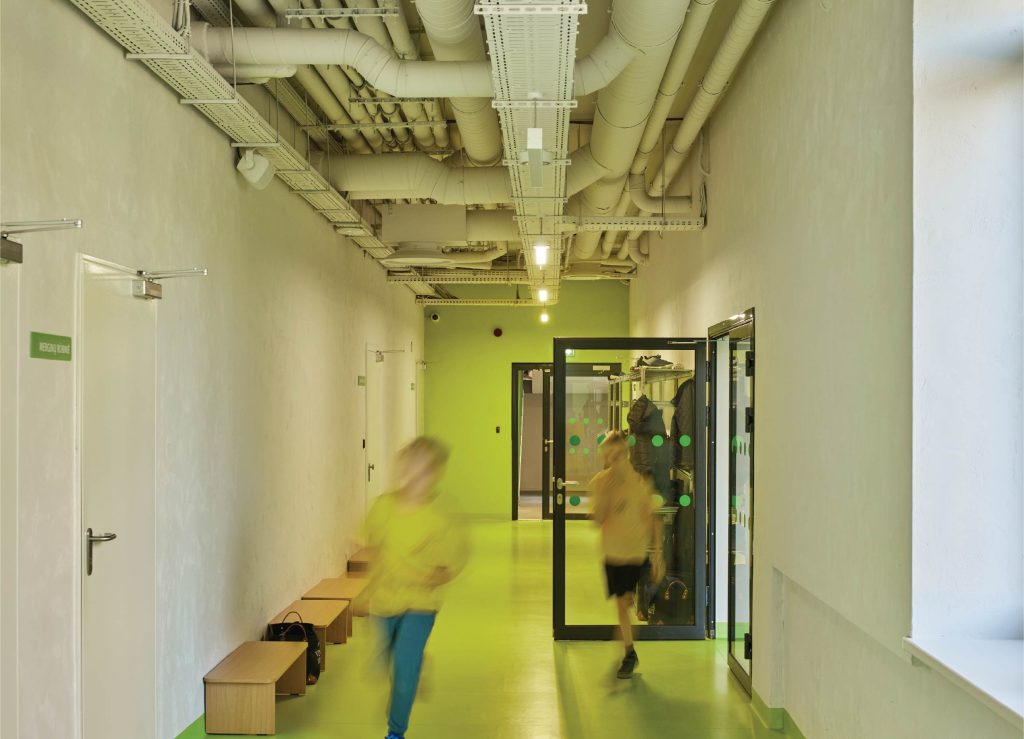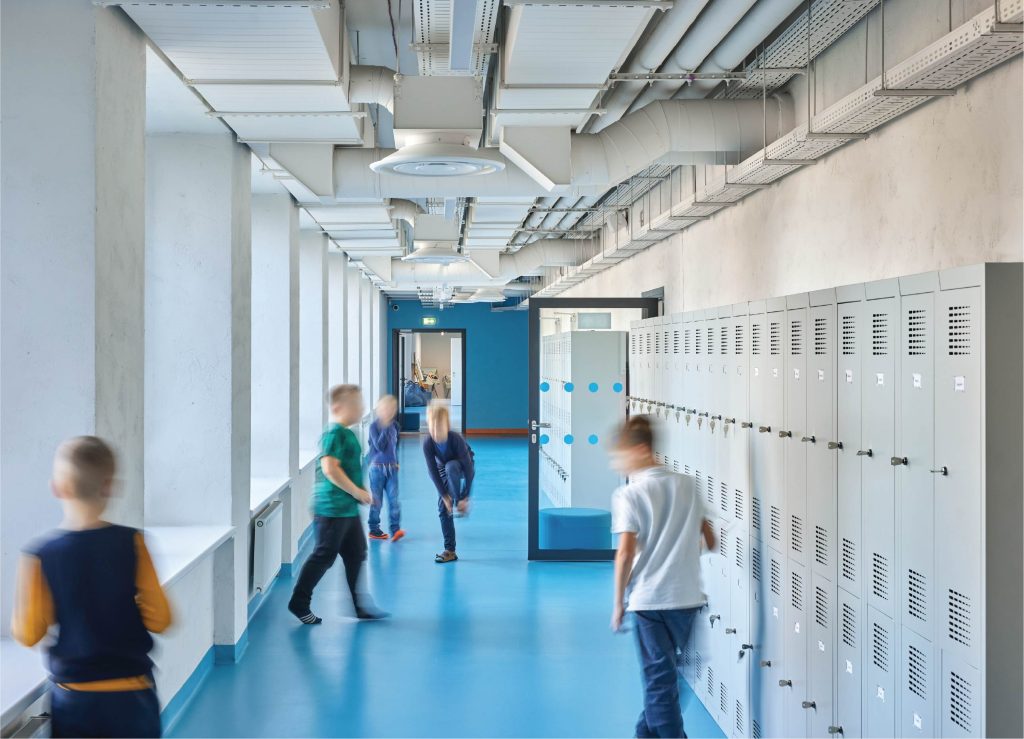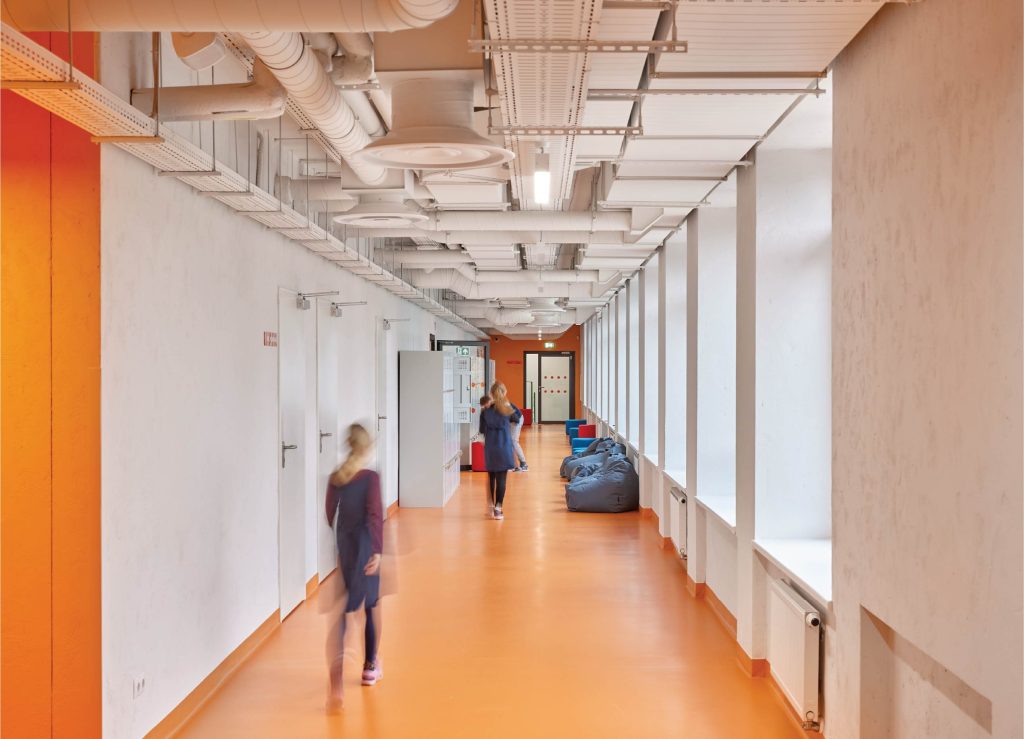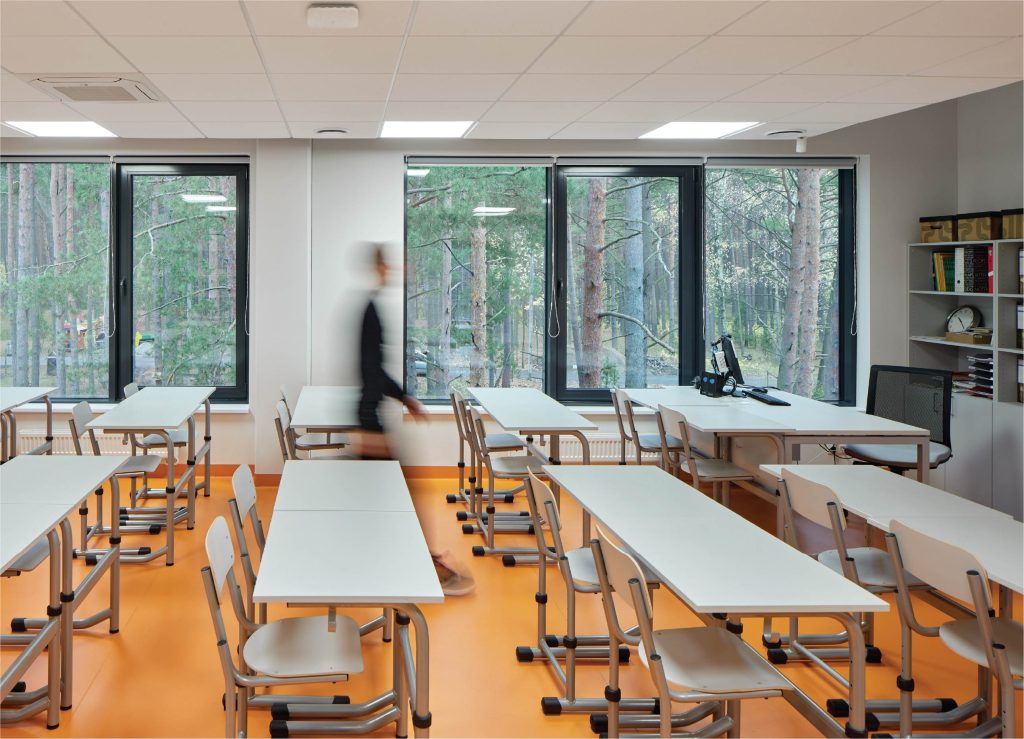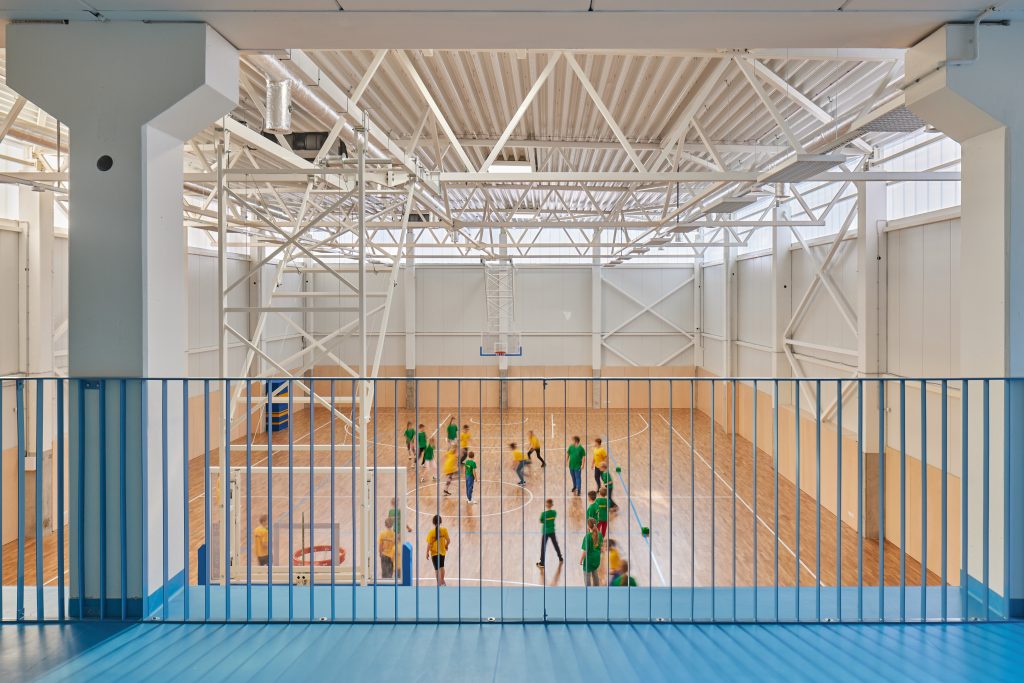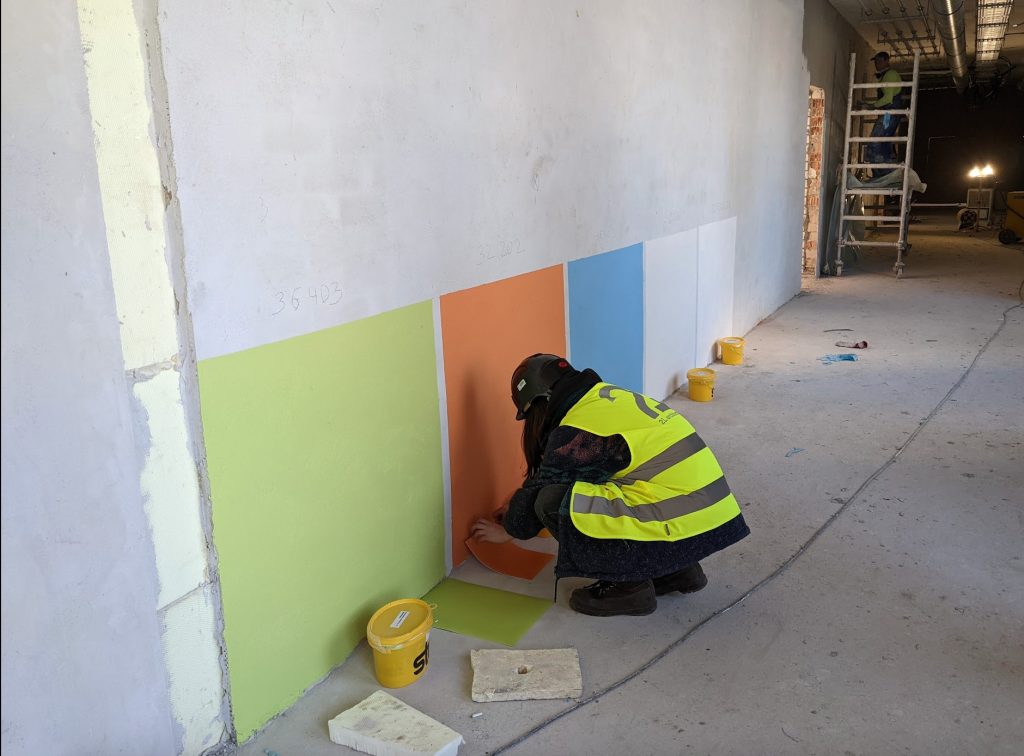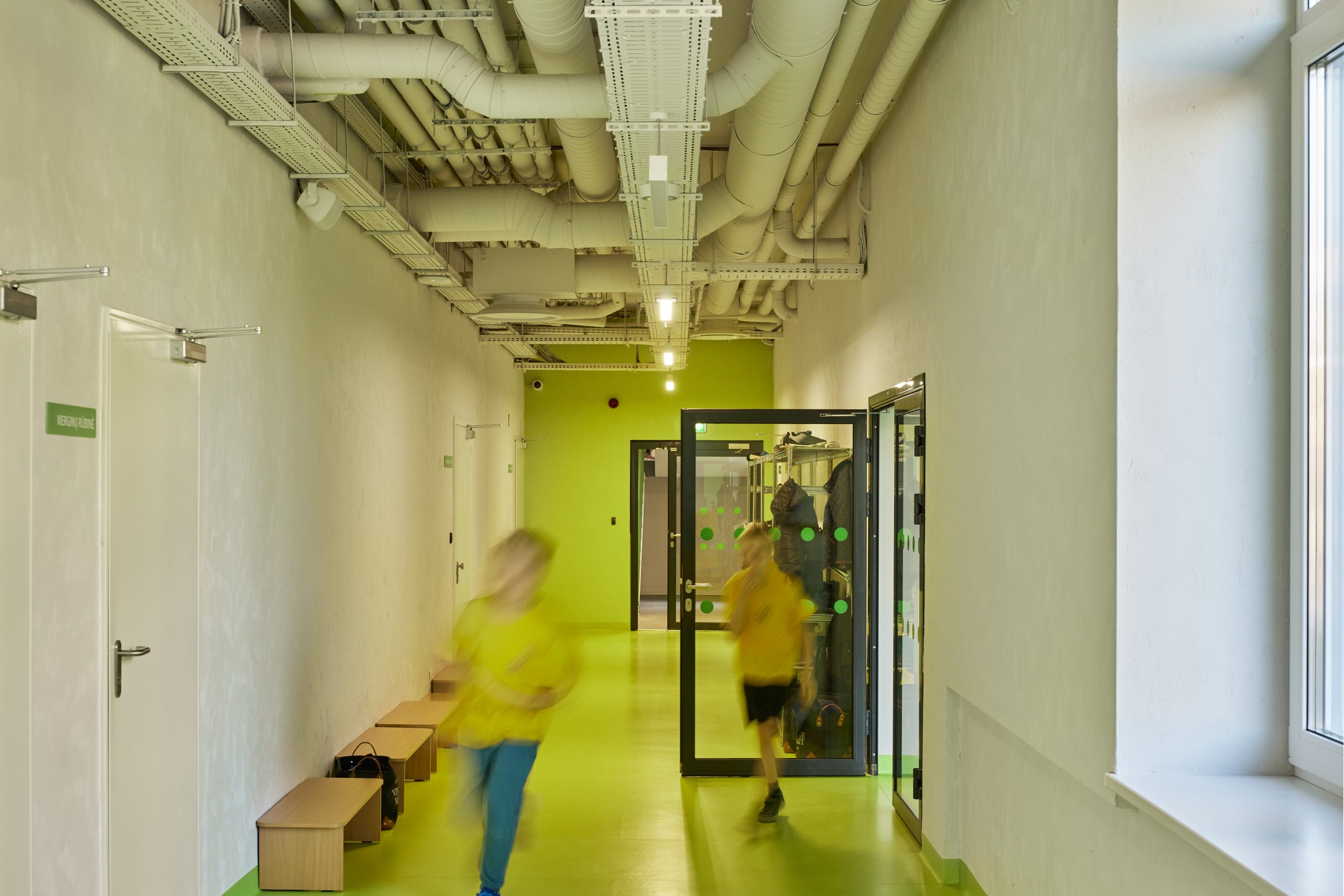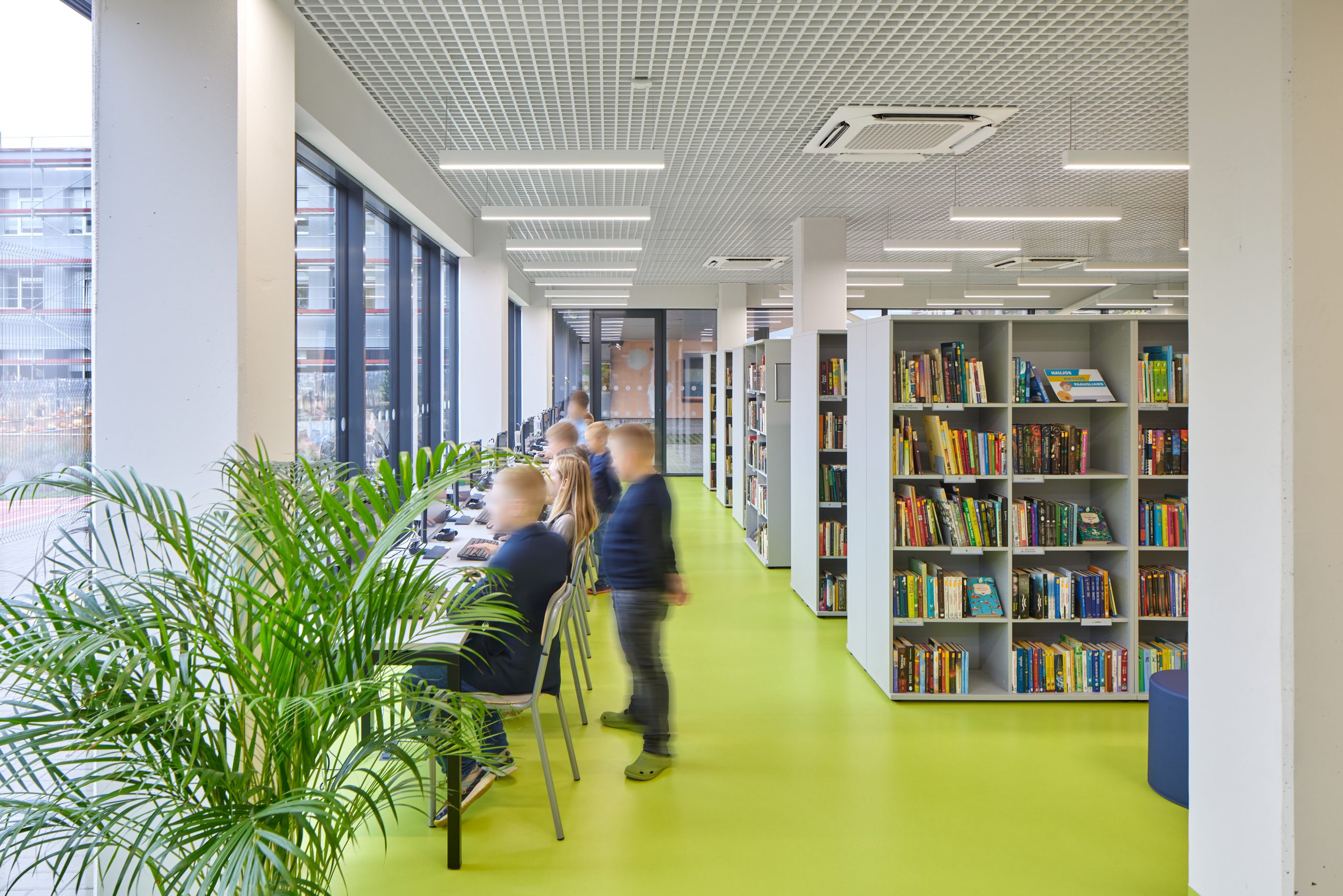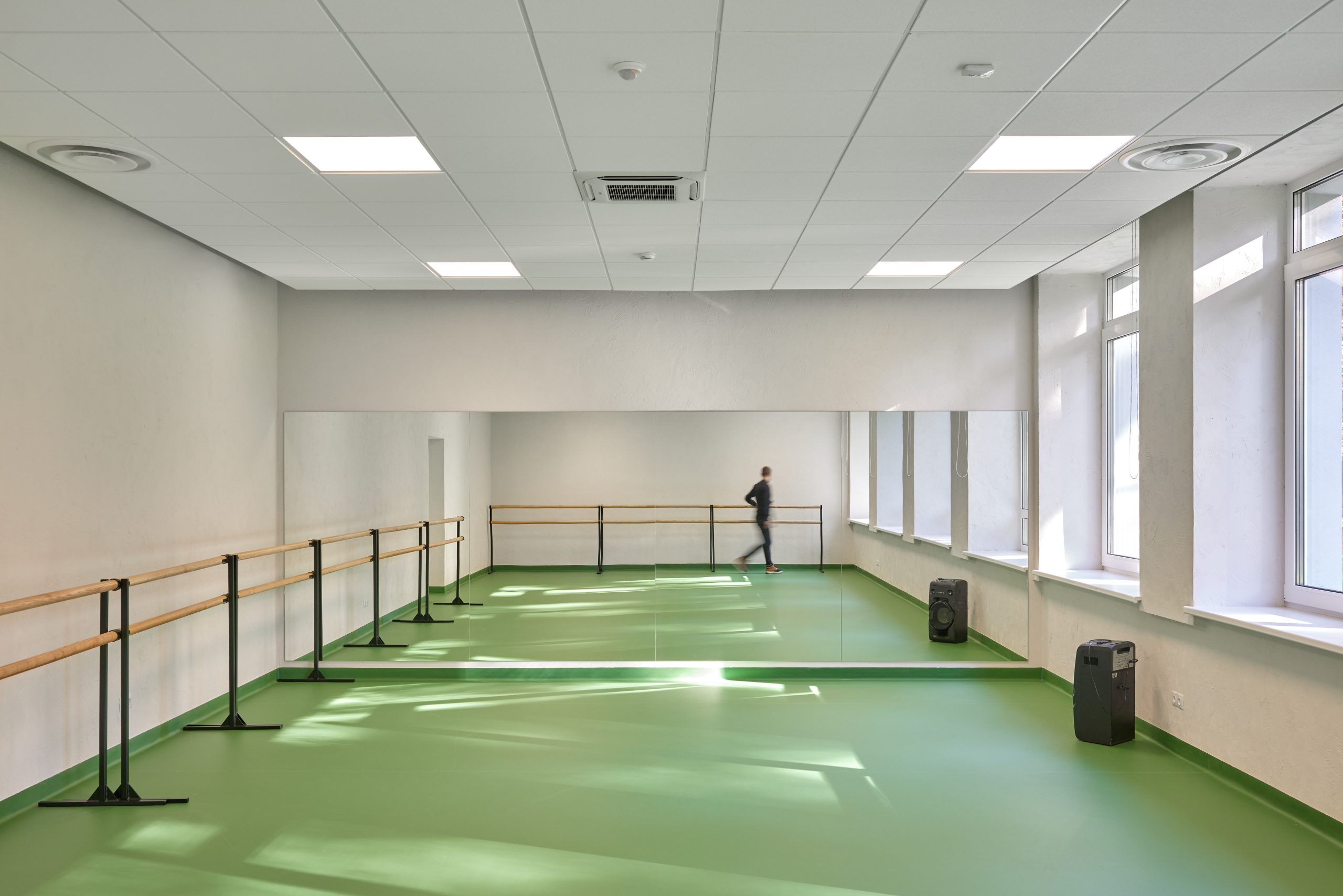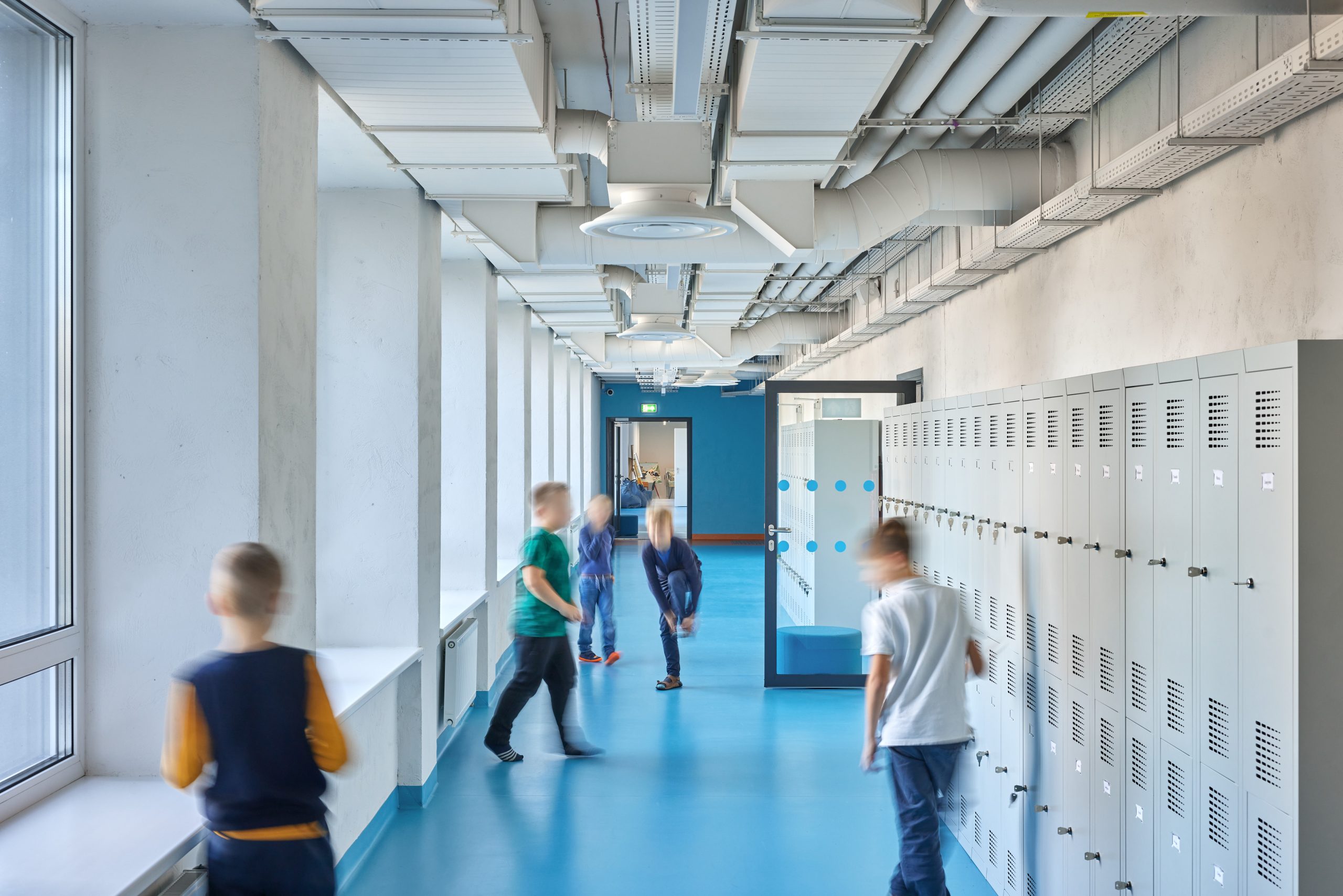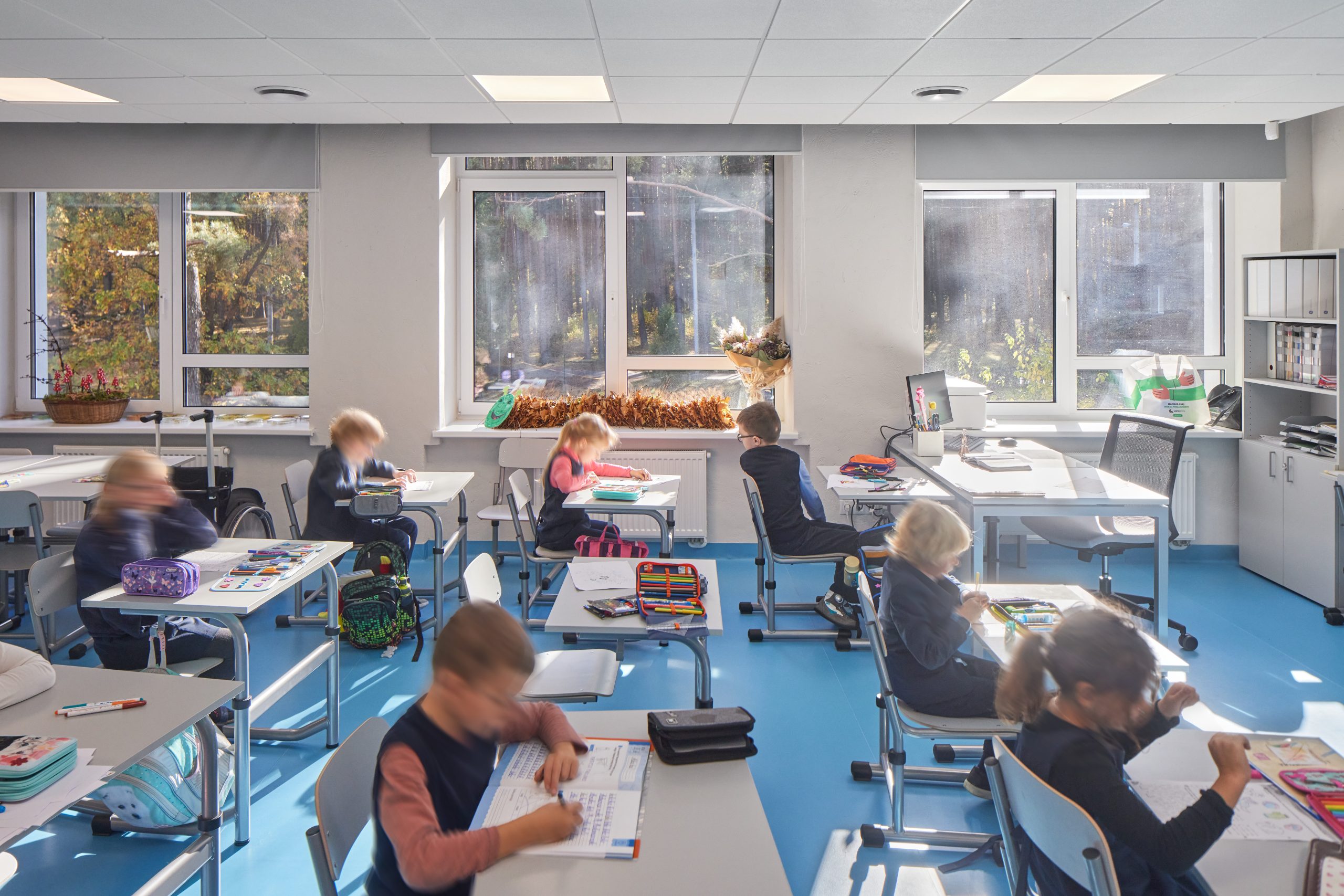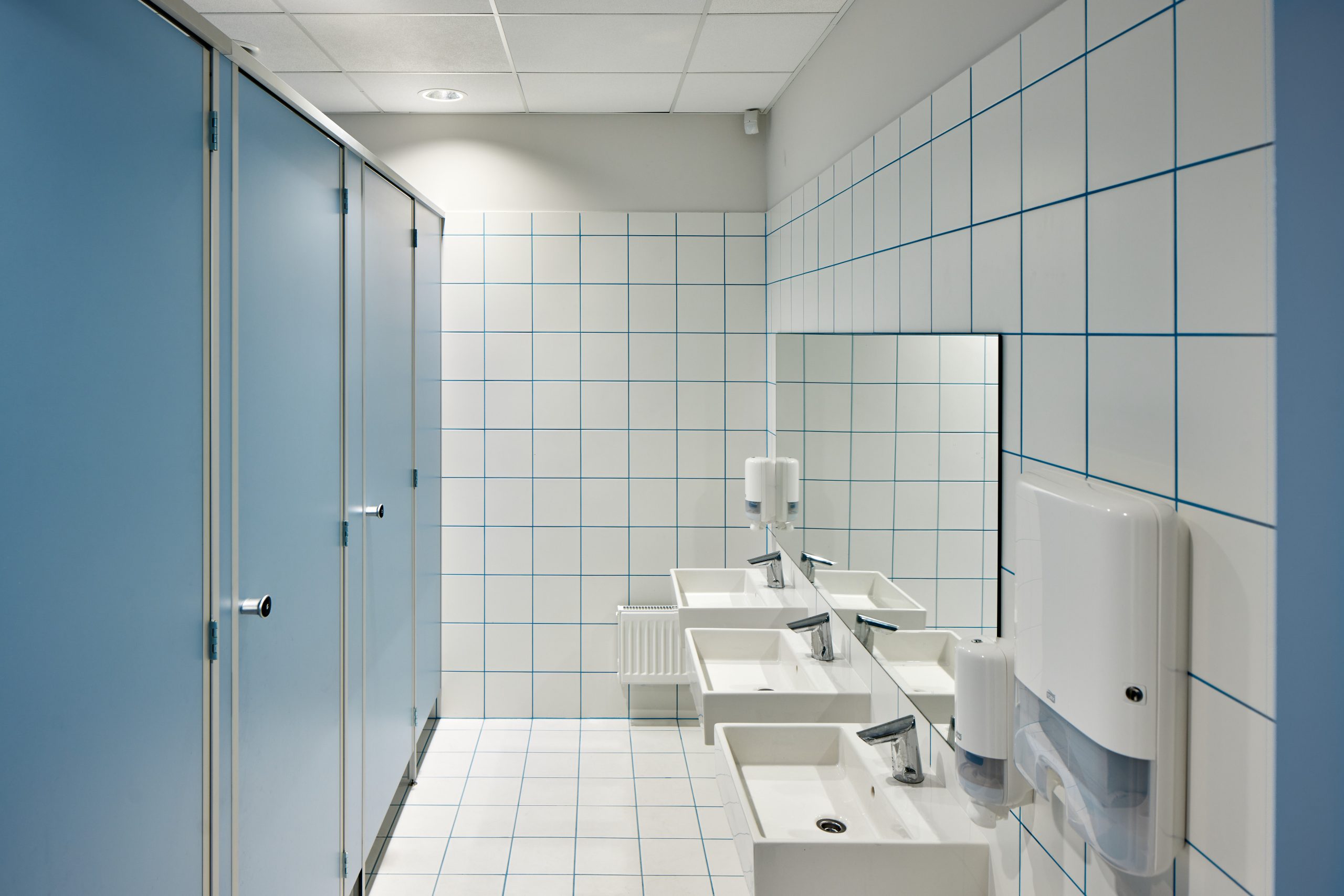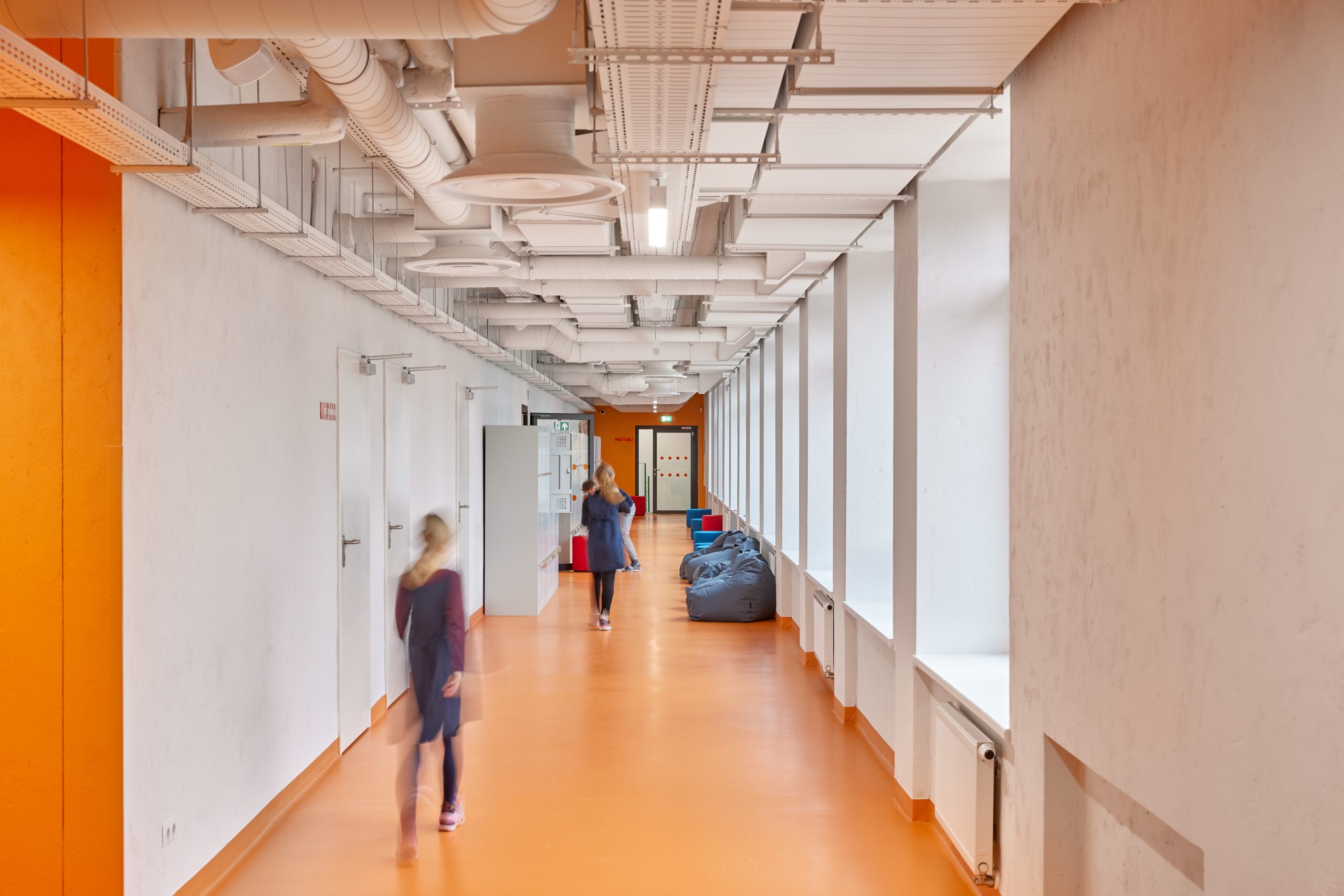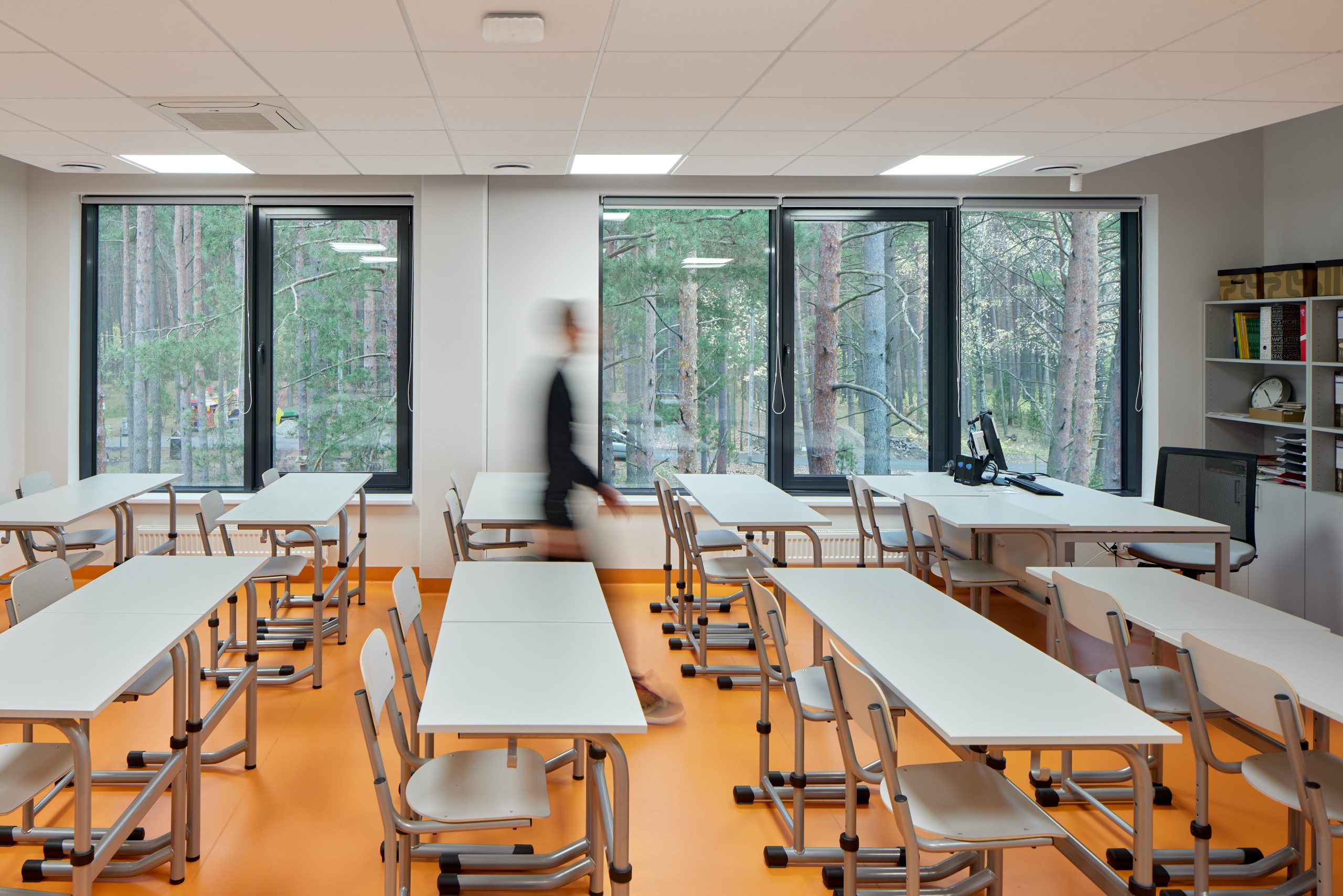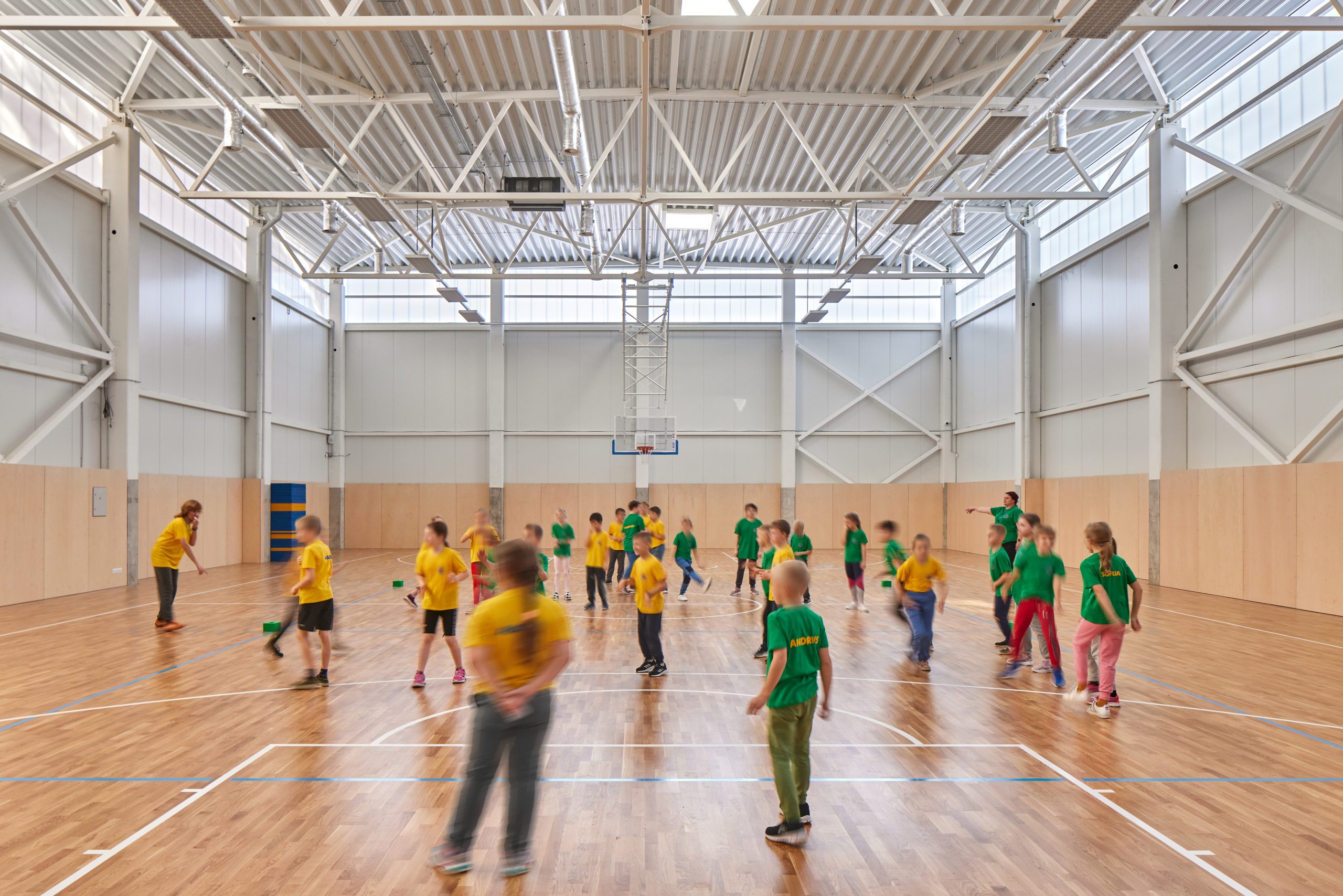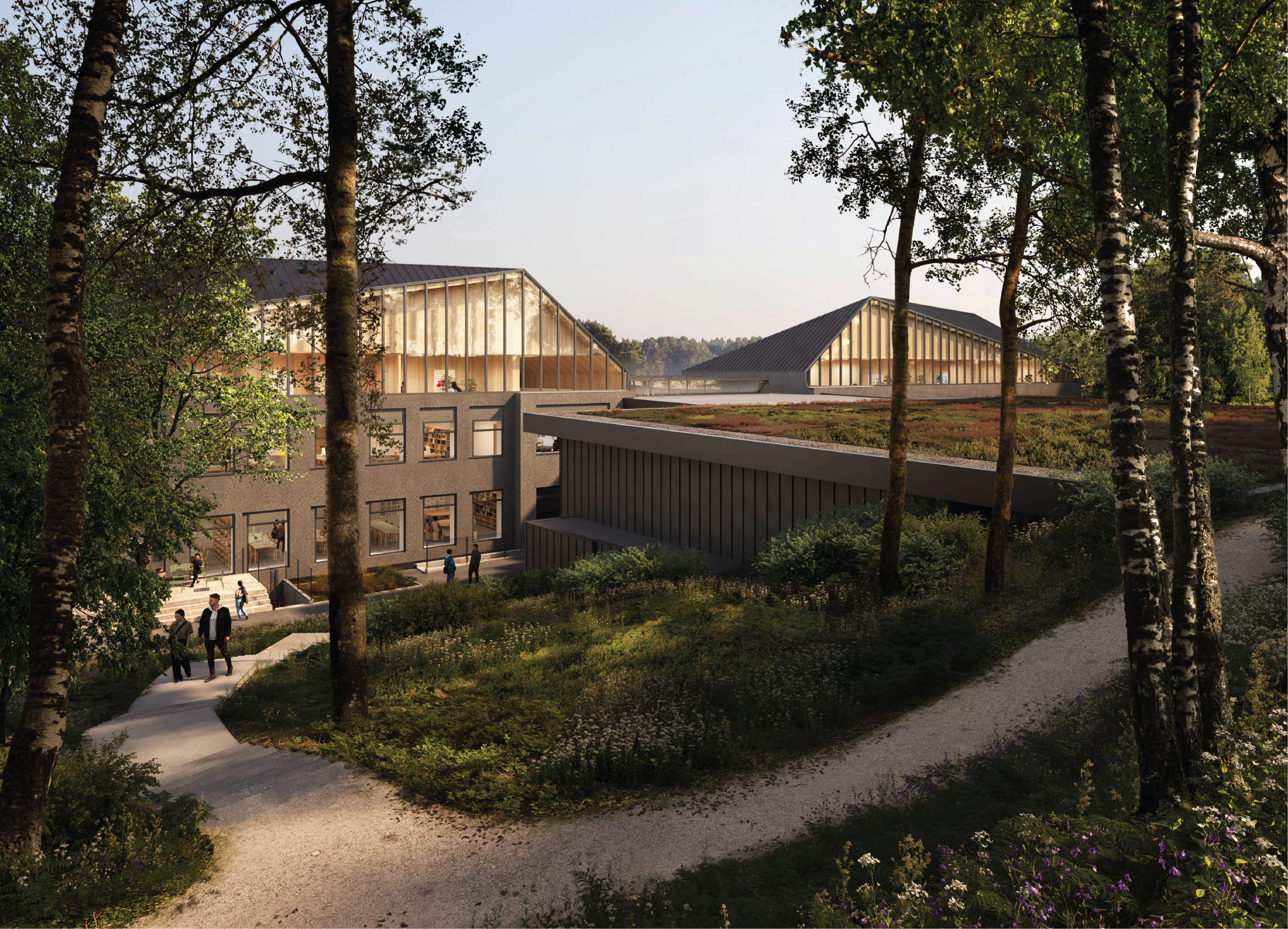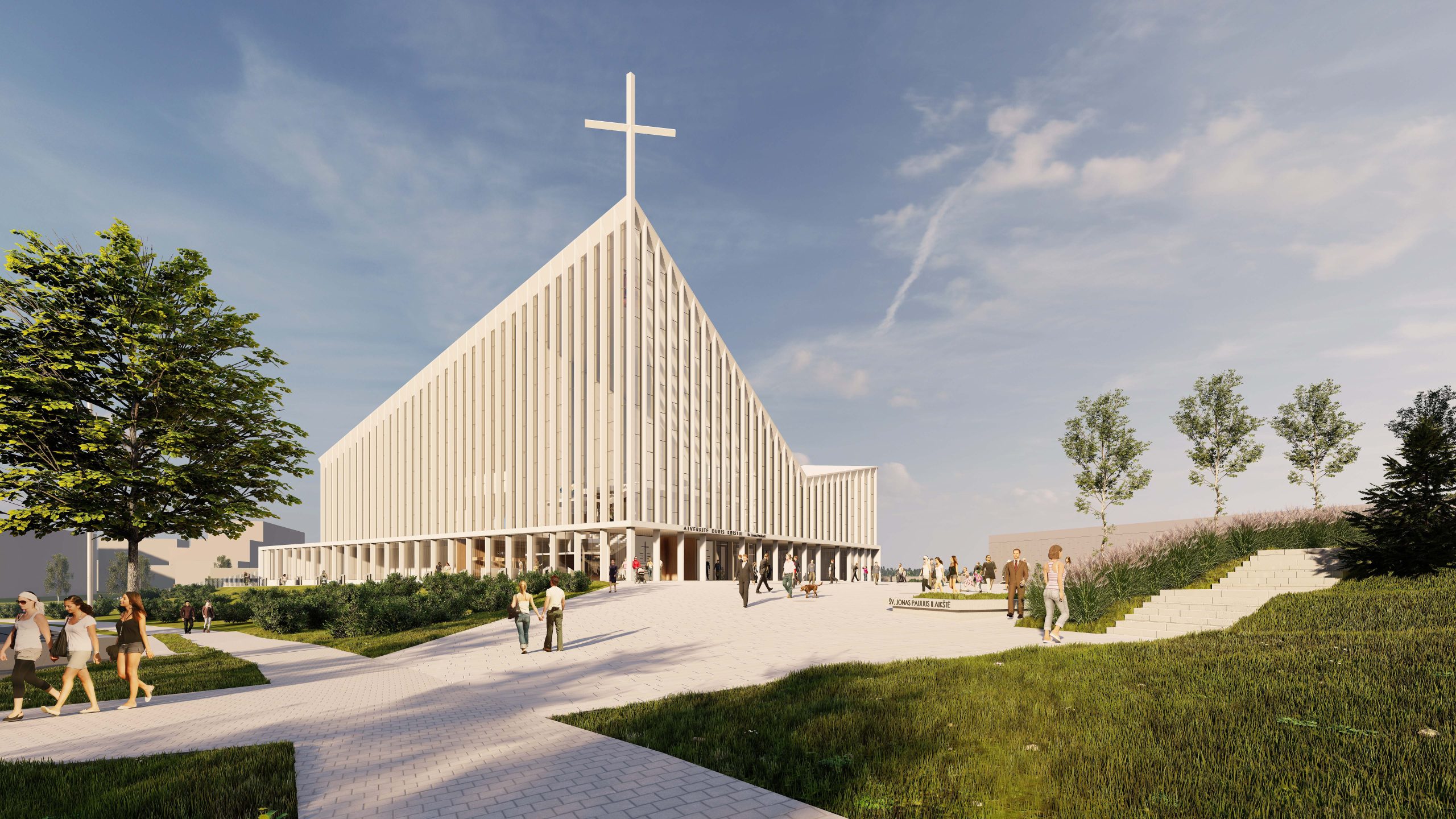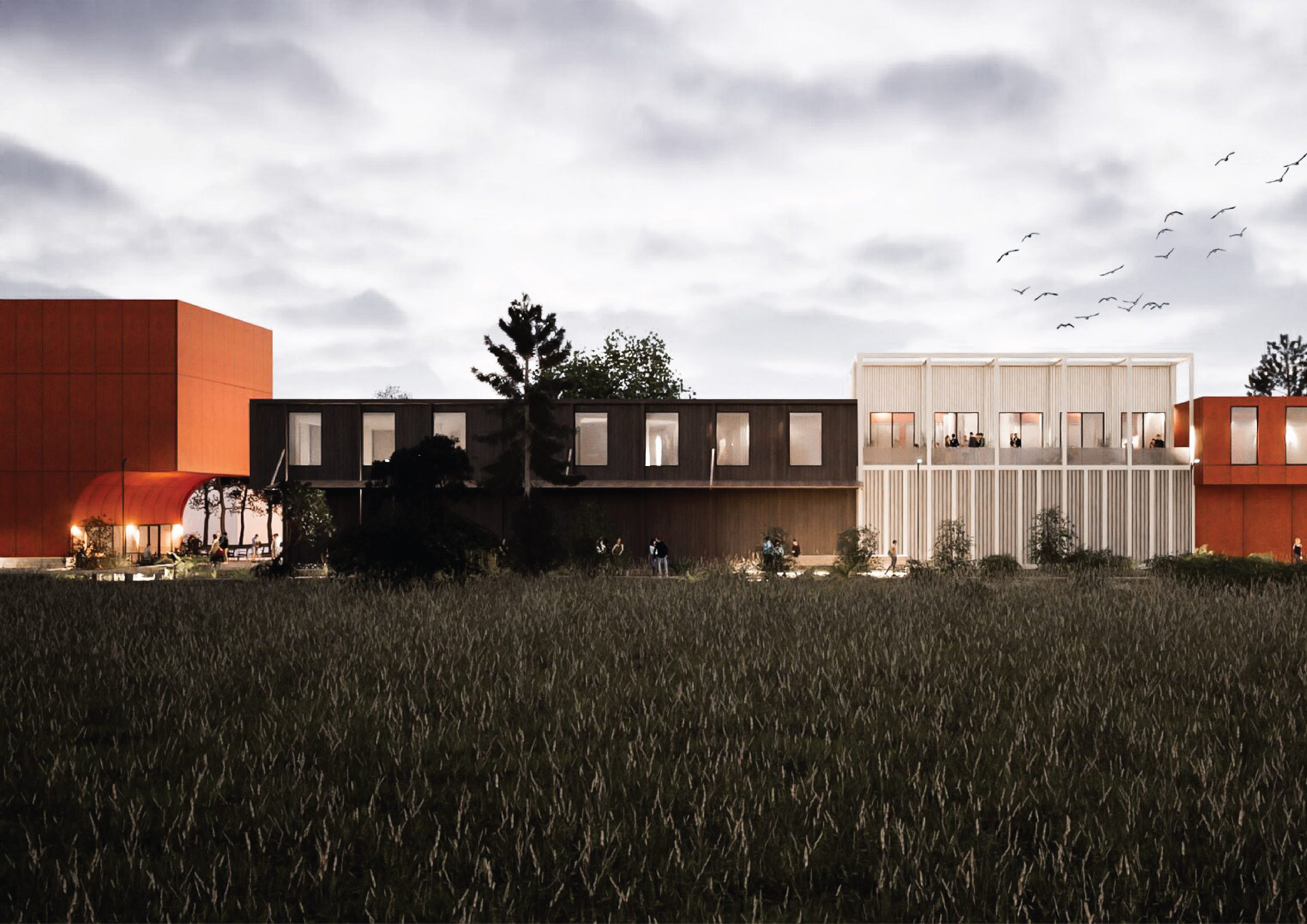Between Trees – Kačerginė Primary School
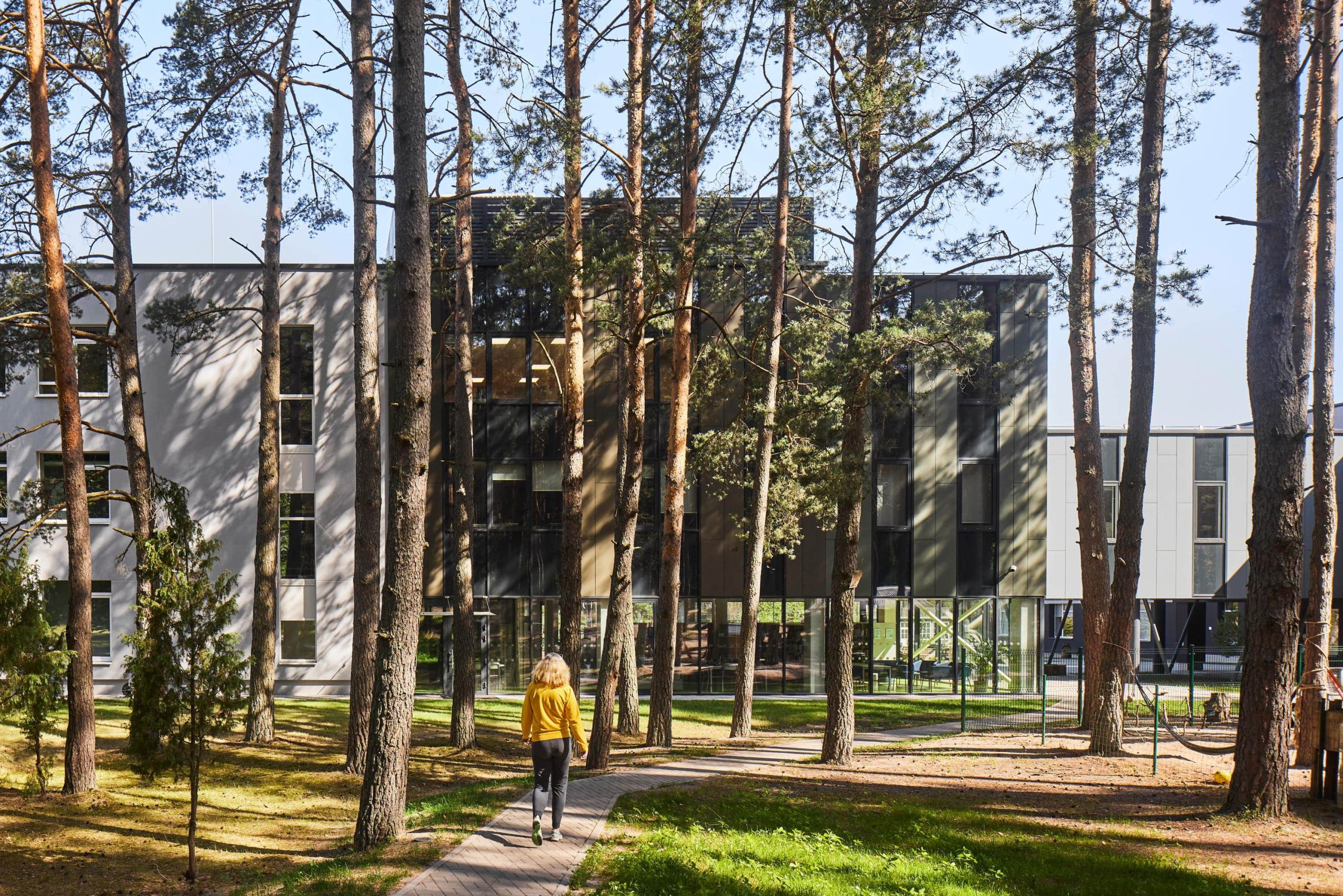
- Location Kačerginė, Kaunas County, Lithuania
- Type Educational
- Size 2 541 m²
- Year 2020 - 2022
- Status Completed
- Client UAB Nullus
- Images Norbert Tukaj
- Project lead Edvinas Kolakauskas, Viktorija Blažienė
- Authors Simonas Norkus, Gabrielė Liucija Ošikaitė, Viktorija Blažienė, Edvinas Kolakauskas, Julius Lapinskas. Structural Engineers - Ramūnas Giedrys, Naglis Elenbergas
The Kačerginė school complex comprises the renovated existing school building, a new sports hall, and a "bridge"-like structure that connects the renovated school with the multifunctional center. This elevated connection facilitates easy pedestrian access across the school grounds to the forest situated behind. The selection of finishing materials drew inspiration from the surrounding architectural landscape and, naturally, the abundant trees of Kačerginė and the site itself.
The Kačerginė school, along with the schools in Zapyškis and Mastaičiai, stands out due to its innovative financing principle: Public-Private Partnership (PPP). PPPs are legally defined collaborations between state or municipal authorities and private entities. These partnerships enable public authorities to delegate their activities to a private body, which, in turn, invests in the necessary assets and infrastructure to carry out these activities and receives legally established remuneration. The Kačerginė, Zapyškis, and Mastaičiai school projects were among the pioneering PPP initiatives in Lithuania and have also received recognition from the UNECE.
-
UNECE Certificate for Environmental sustainability and resilience Replicability for excelling in PPP's
Inspiration from the surrounding trees of Kačerginė
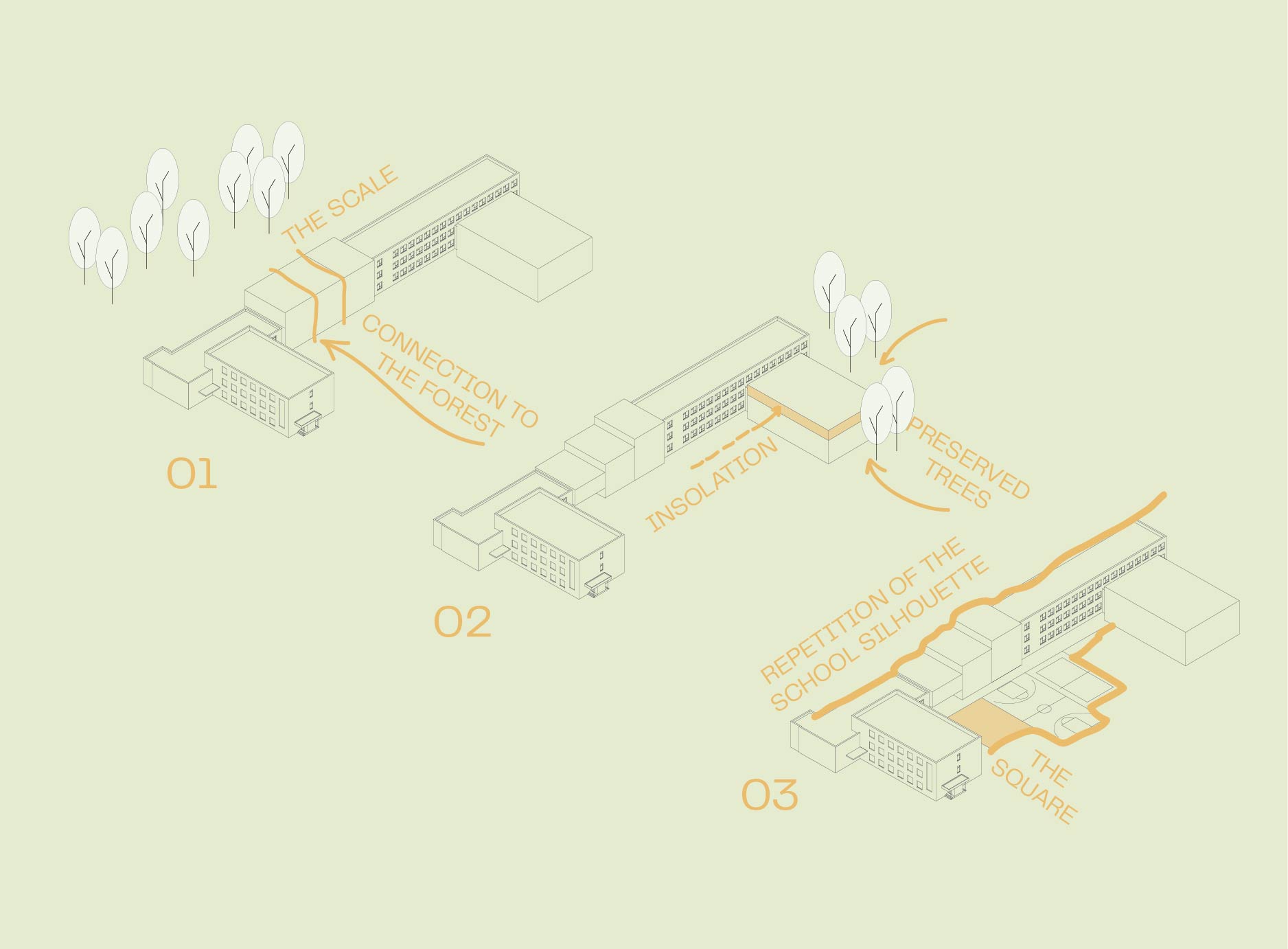
The architectural design thoughtfully integrates the school with its urban and natural context. New volumes are carefully scaled, with the connecting structure intentionally broken into varying heights to harmonize with the town's smaller buildings. Elevated on columns, this connecting volume fosters a visual and spatial link to the adjacent forest, while its silhouette is echoed in the landscape design. At the heart of the complex, the intersection of pathways forms a central hub for events and recreation.
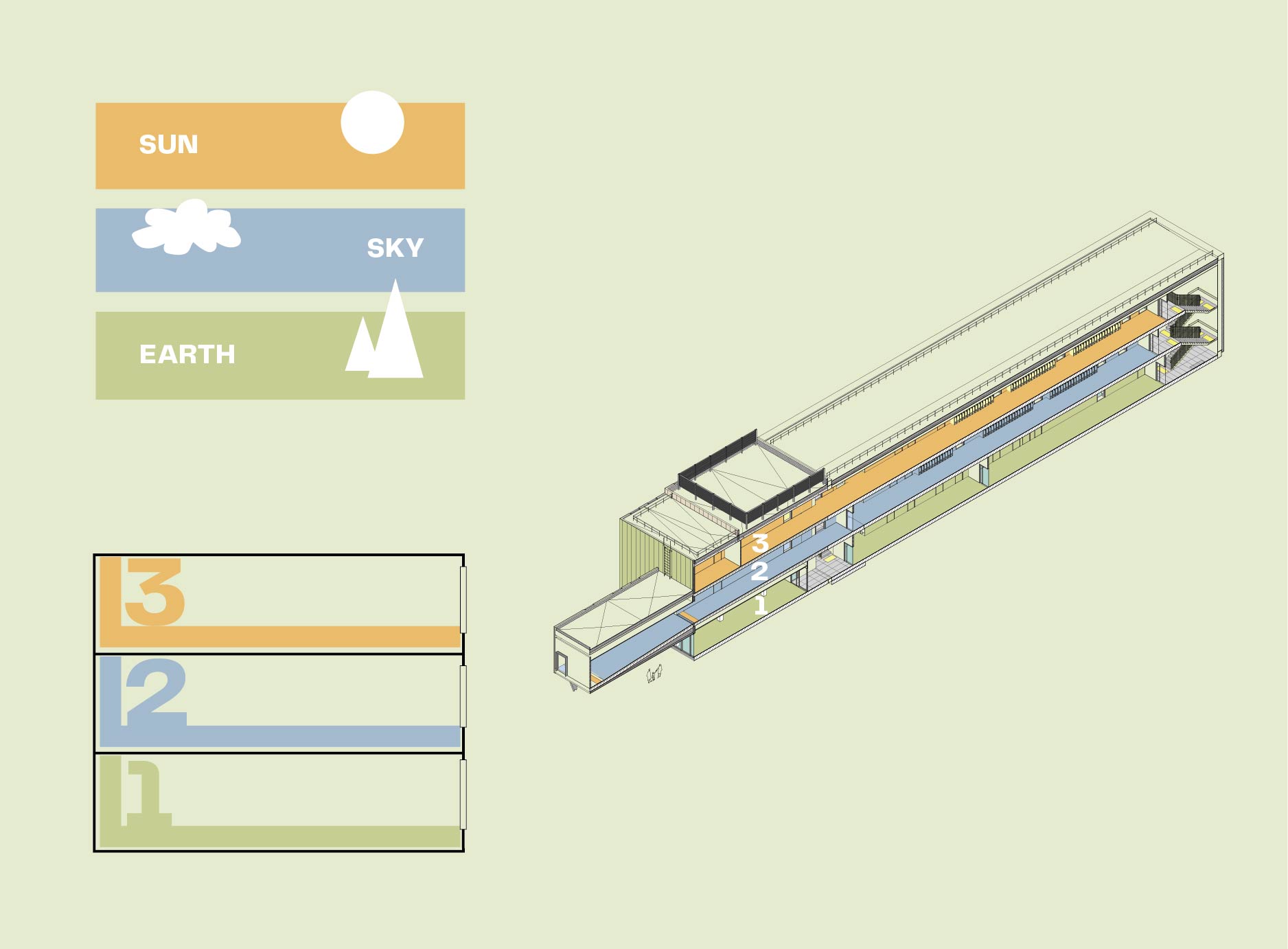
The interior design concept seamlessly blends the exterior's natural palette into the building's heart, echoing the surrounding environment with varying intensities. Each of the three levels embodies a distinct natural element through color: the ground floor resonates with earthy greens, the second floor evokes the expansive blue of the sky, and the top floor radiates with the warm orange hues of the sun. This gradient of color creates a harmonious and intuitive connection to the outside world within the learning spaces
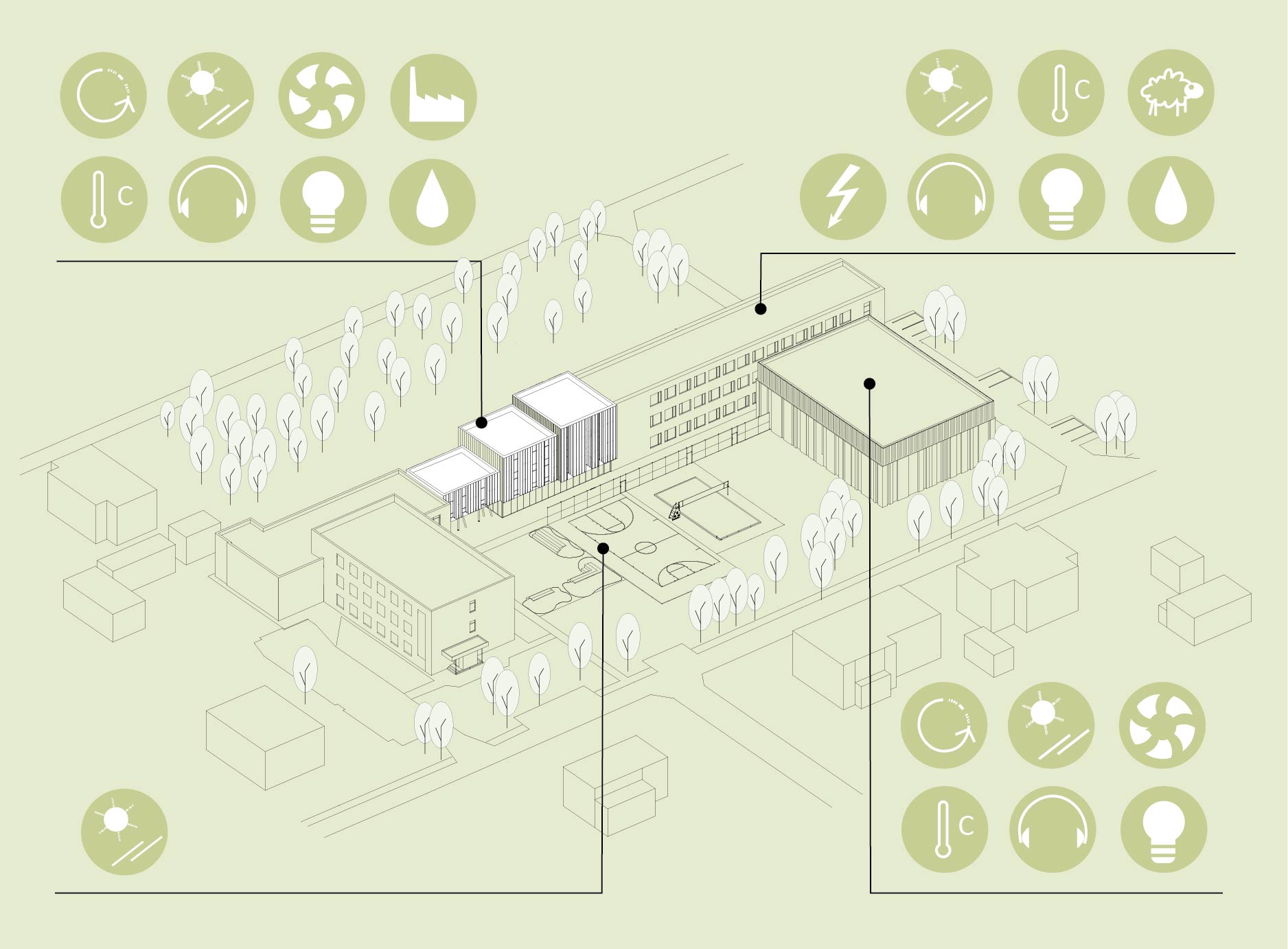
This project prioritizes energy efficiency and sustainability through a multi-faceted approach. Passive design strategies, such as natural shading and optimized window properties, are central to minimizing the need for energy-intensive cooling. Furthermore, the design incorporates highly efficient active cooling systems in new extensions and plans for mechanical ventilation with recuperation reaching 80% efficiency. Notably, the preliminary design includes a 12 kW photovoltaic system to generate renewable electricity for heating, cooling, hot water, and general use, with excess energy intended for the grid.
Project facts
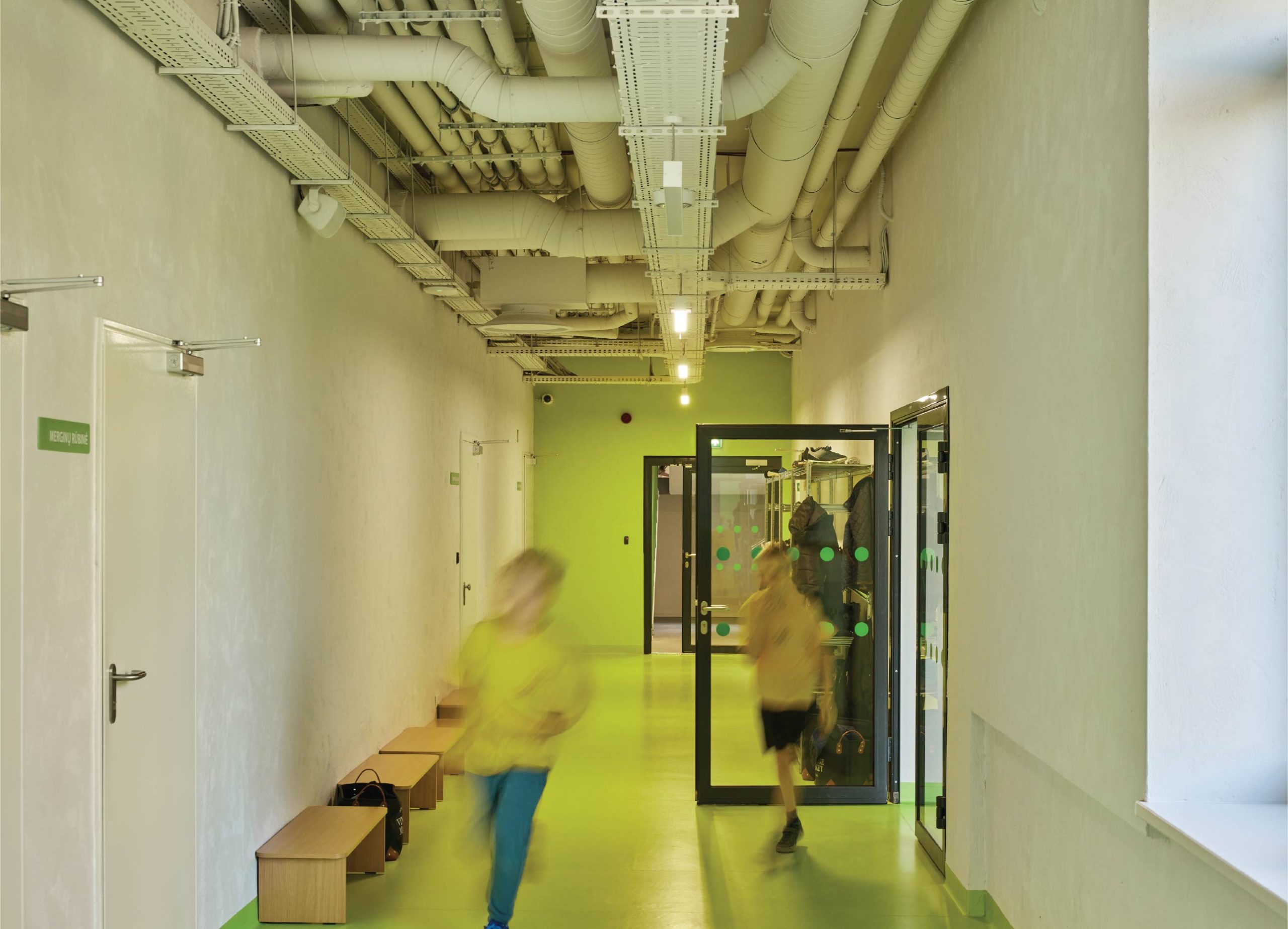
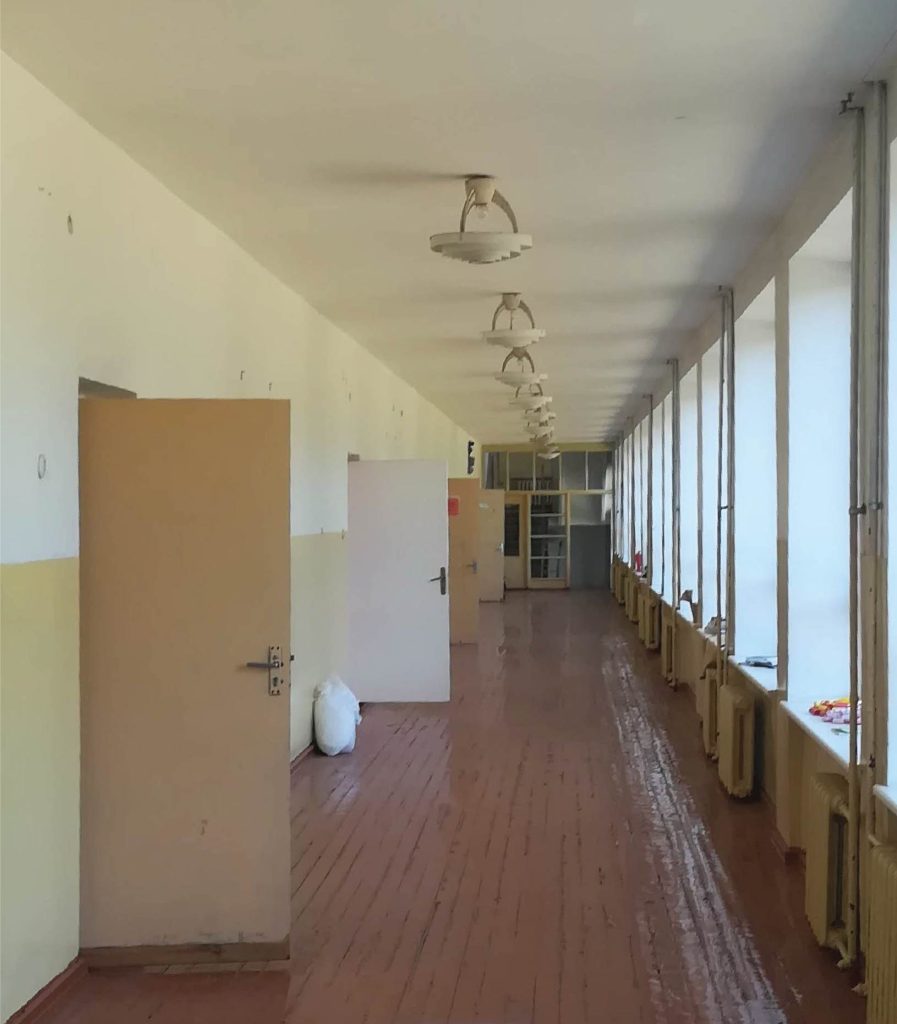
This project envisions the school as more than just an educational institution, aiming to establish it as a vibrant multi-functional and cultural hub for the local community. The design strategically incorporates spaces like the large and small sports halls, choreography classroom, and library on the ground floor with dedicated entrances to facilitate public access for sports, events, and meetings without disrupting student activities on the upper levels. Furthermore, the accessible second-floor computer classroom is intended to offer opportunities for community members to engage in digital learning and activities, fostering broader engagement and utility of the school's resources.
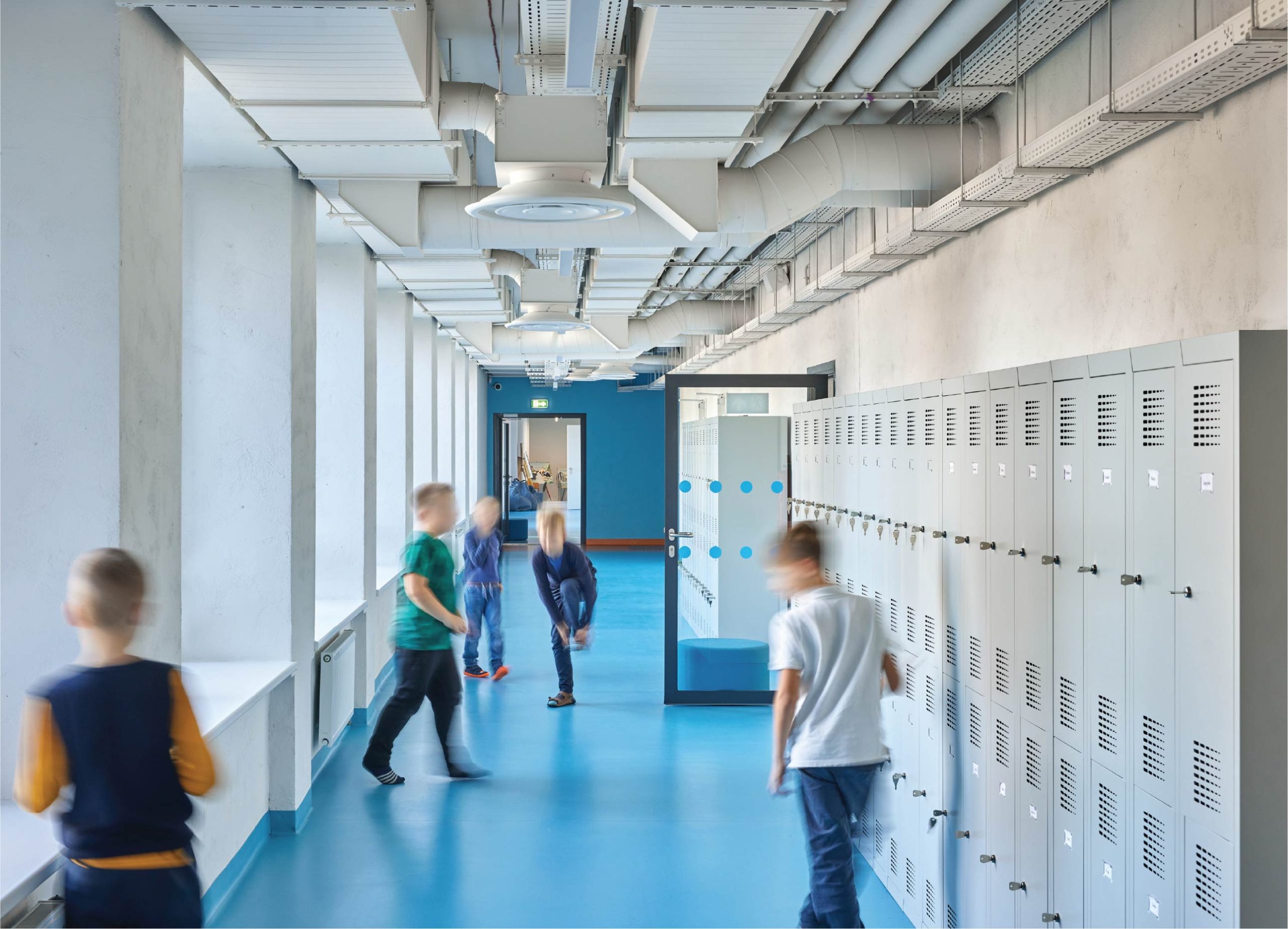
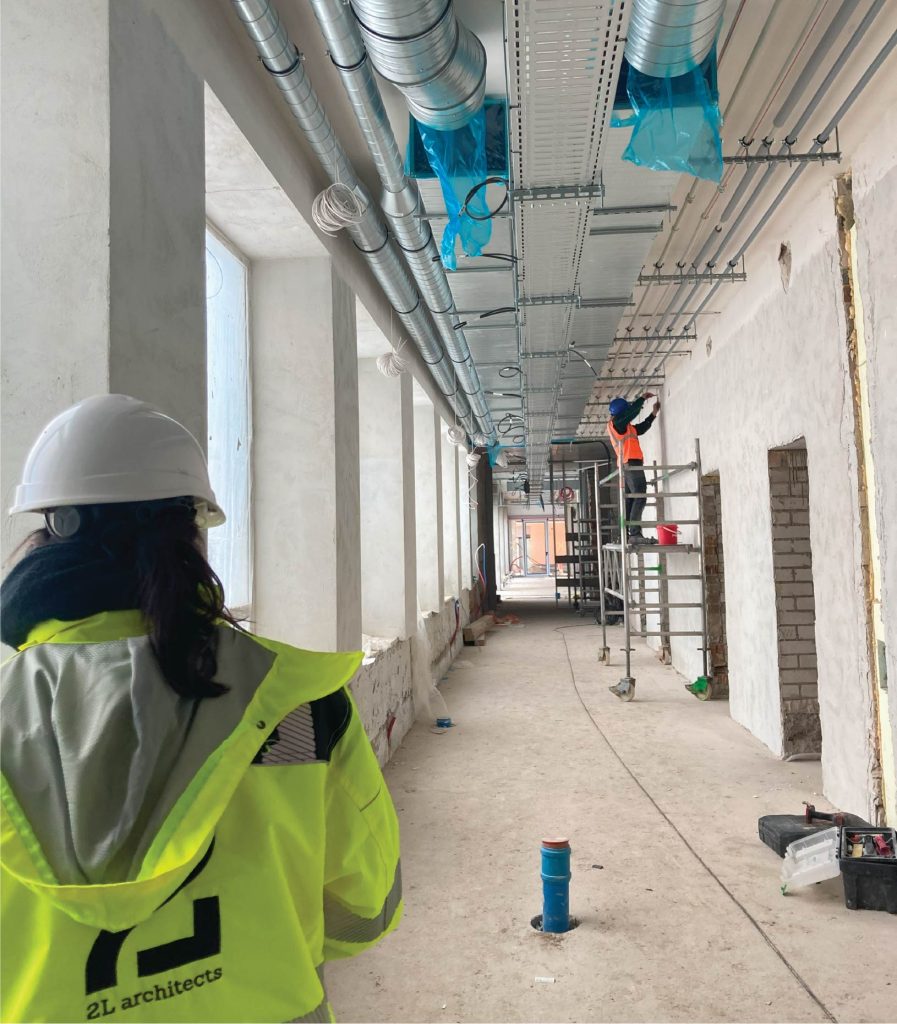
The building employs a simple yet effective color-coded orientation system across its three floors: green for the ground floor, blue for the second, and orange for the third. This vibrant vertical differentiation allows children to easily identify their classroom floor by color. Complementing this, clear information signs are placed on each classroom door, ensuring straightforward navigation throughout the school for both students and visitors.
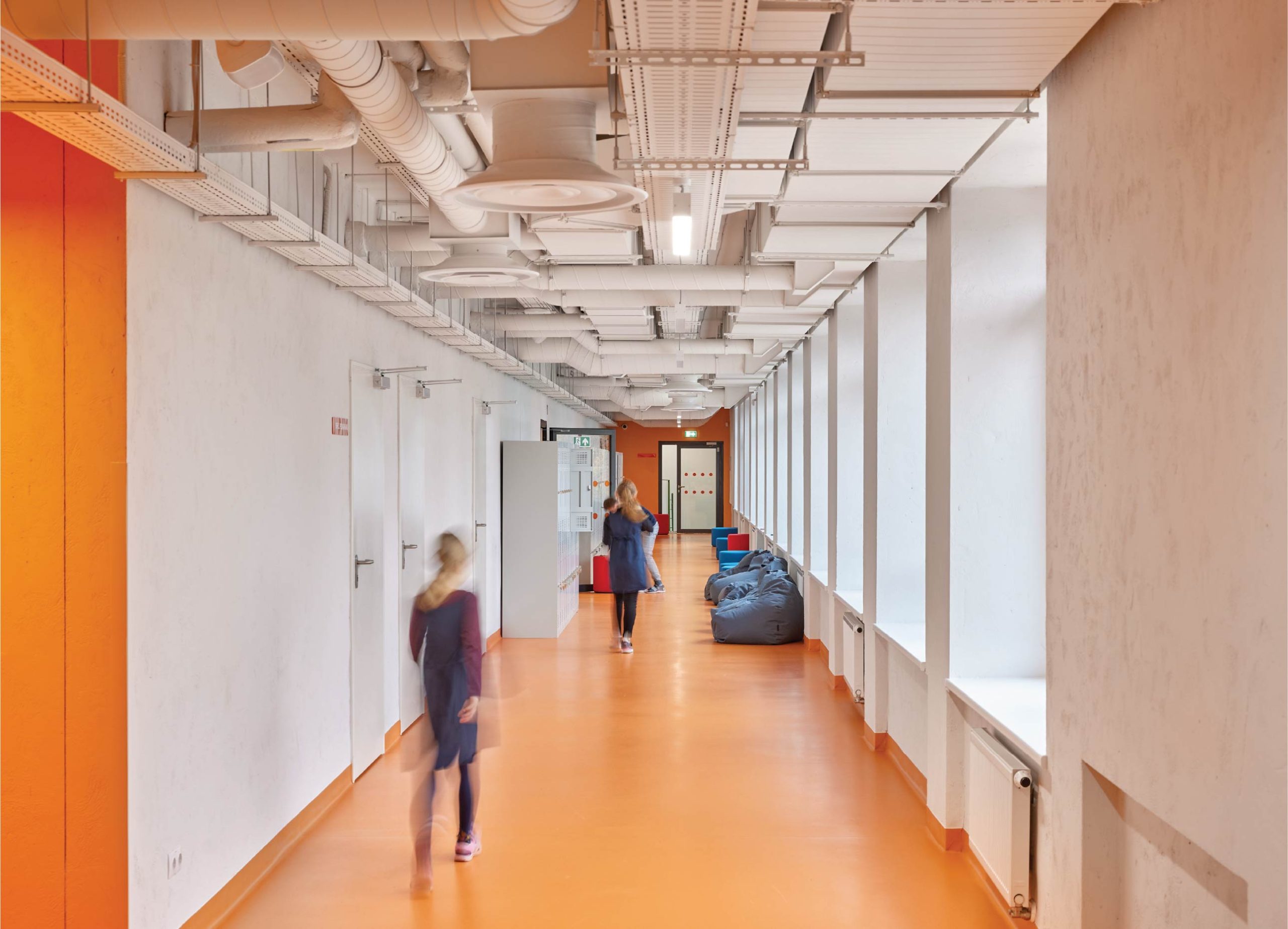

In the corridors, a contemporary design approach leaves the engineering systems exposed, eliminating the need for a traditional ceiling, a decision also influenced by the window height. To maintain visual appeal, the exposed pipes and ducts are painted, adding an industrial yet intentional aesthetic. In contrast, the classroom areas feature acoustic ceilings, specifically chosen to optimize the learning environment by effectively managing sound and reducing reverberation.
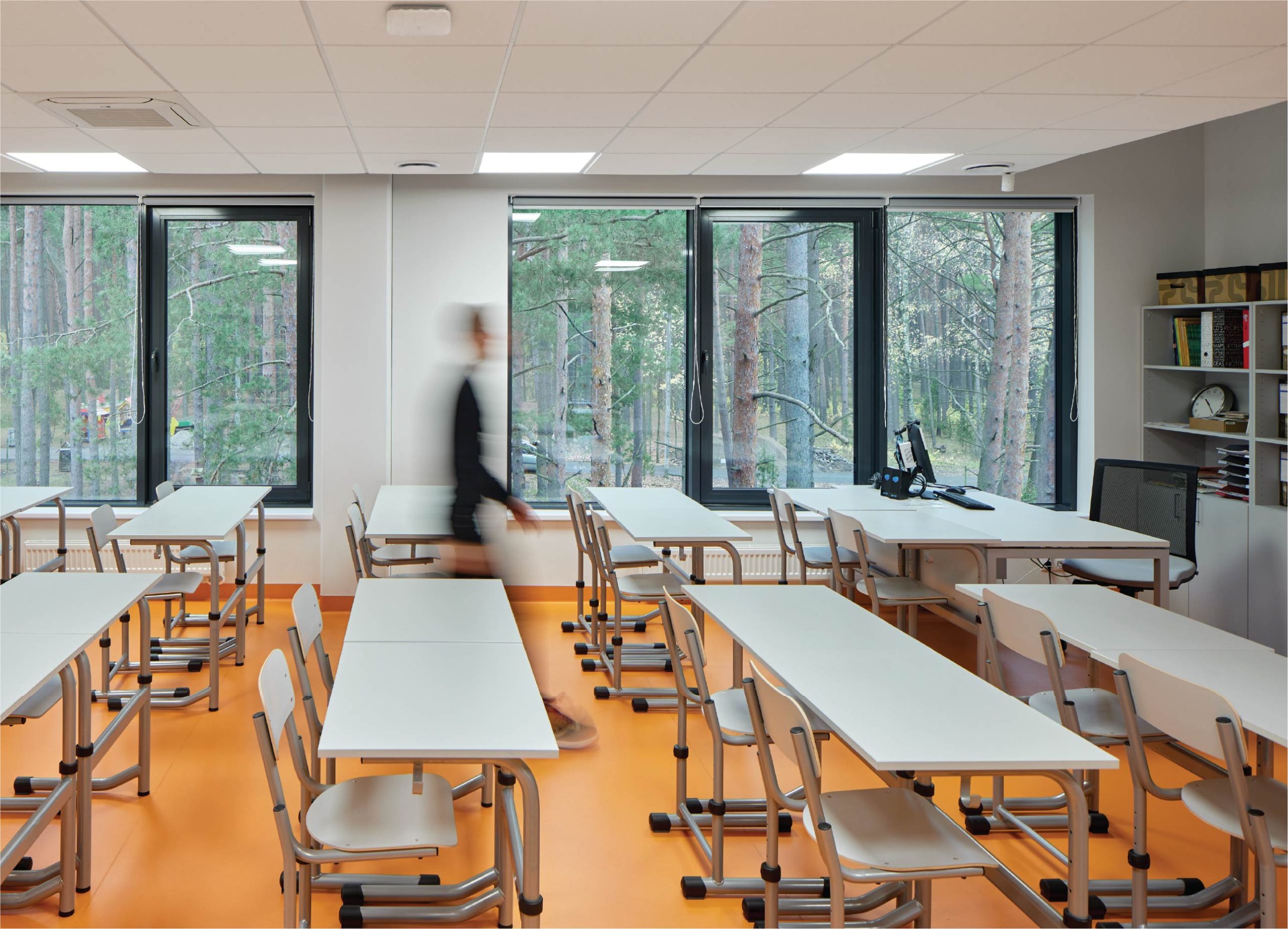
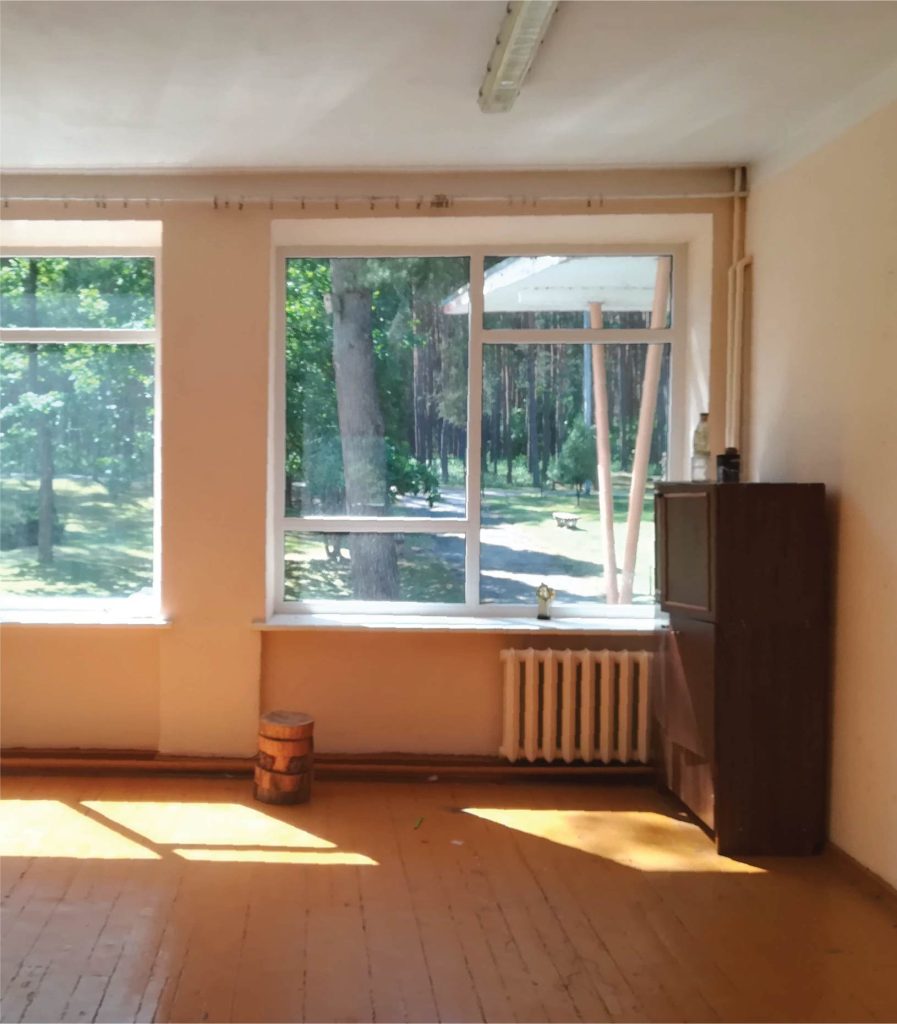
Instead of opting for a complete demolition and new construction, the project embraced a contemporary and ecological approach by preserving the existing school structure. This decision not only saved valuable resources and reduced environmental impact but also provided a foundation upon which to integrate modern extensions and functionalities. By thoughtfully blending the old with the new, the design creates a unique learning environment that respects the past while embracing the future.
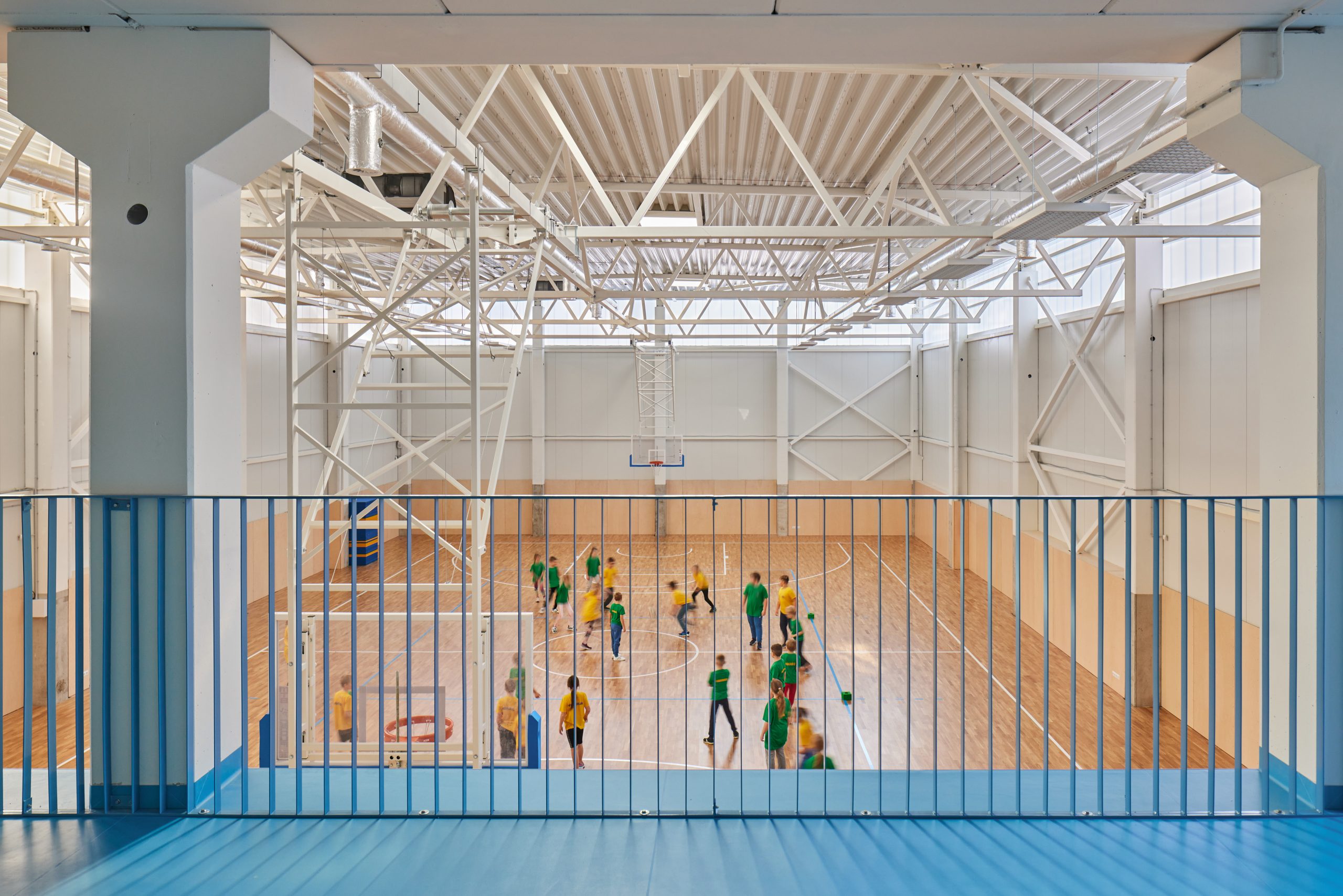
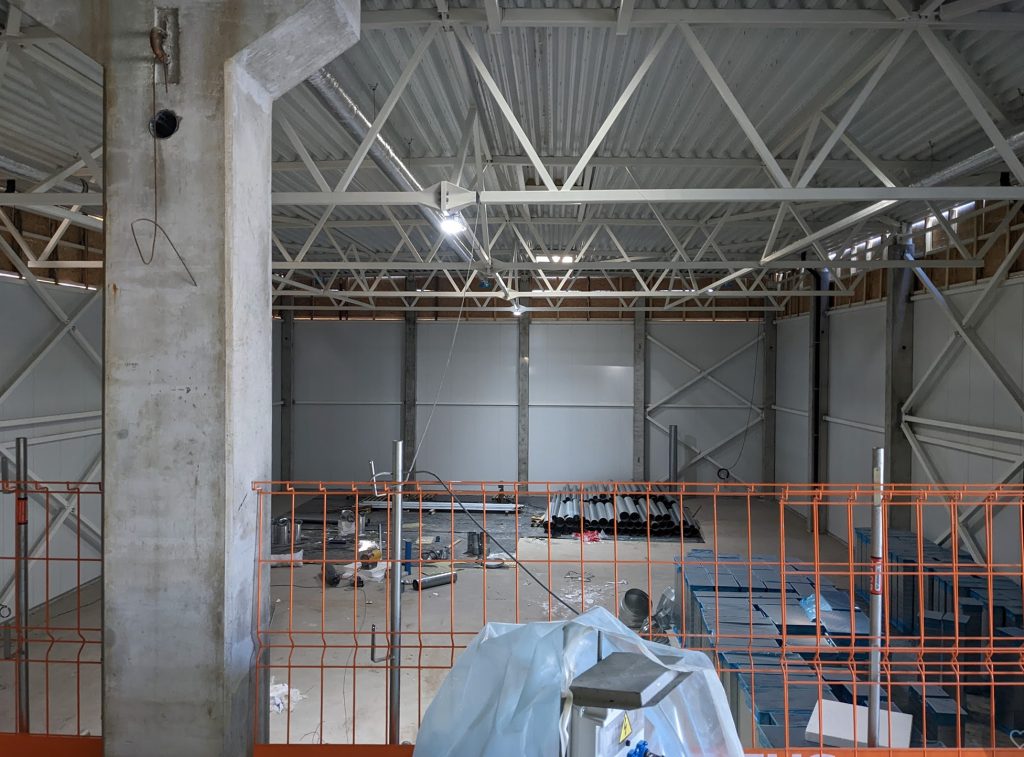
By adding a new sports hall, the existing school building gains a vibrant new dimension, extending its purpose beyond education to become a true community hub. This modern extension offers state-of-the-art facilities for students, enriching their athletic and recreational opportunities. Crucially, it also opens its doors to the town's residents, providing a much-needed space for sports, events, and gatherings. This thoughtful integration breathes new life into the school, transforming it into a dynamic center that serves and strengthens the entire community.

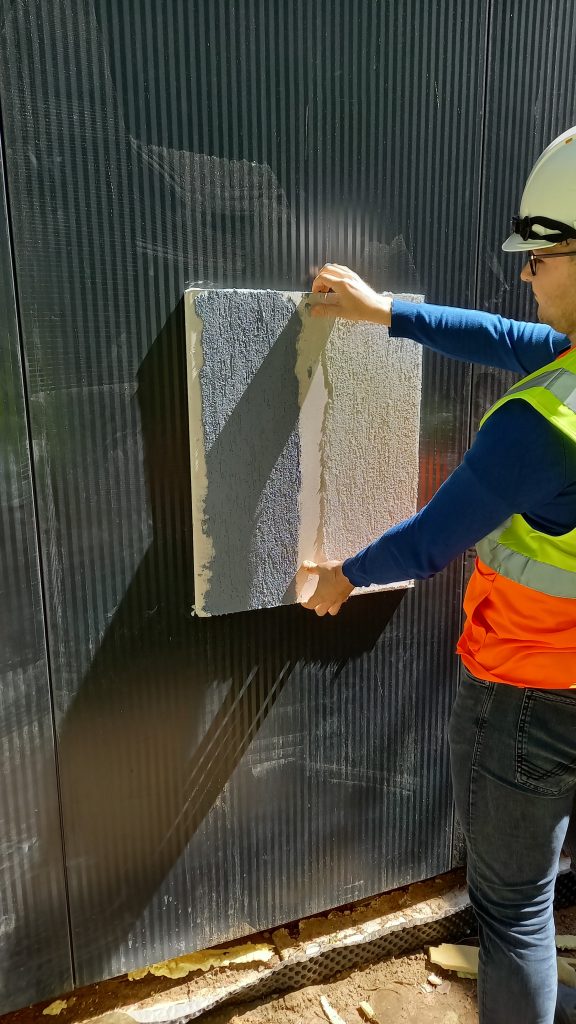
What you see in this revitalized school is the culmination of countless hours spent behind the scenes. Our team poured over designs, meticulously chose colors, fought for saving trees and tirelessly sought out the most efficient and inspiring solutions. Every decision, from the grand architectural strokes to the smallest detail, was made with one goal in mind: to create a vibrant, engaging, and optimal learning environment for every child who walks through these doors.




